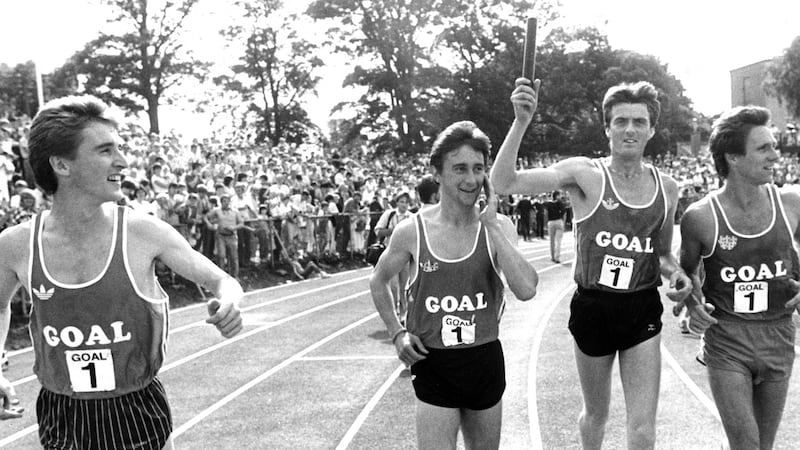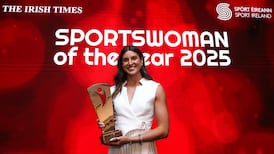There is a lot of talk this weather about what makes a great team. Or indeed a team great. The belief in their winning record . . . their ability to overturn defeat . . . their seeing of the impossible when no one else does.
Being at the Aviva Stadium last Saturday to see Ireland take out Wales with a combination of all of the above was a gentle remember of another great team once witnessed there – 33 years ago, to be exact.
Even recalling the place as Lansdowne Road feels like a lifetime ago but there’s no forgetting the day De La Salle Churchtown beat Blackrock College to win the 1985 Leinster Schools Senior Cup.
We were first year students, and some of us had never thrown a rugby ball before in our lives. And in some cases since. What we did realise was the enormity of De La Salle’s achievement in making that final, even when just two years earlier they made history by beating Castleknock to win the 1983 Senior Cup – becoming the first and still only non fee-paying school to lift that revered prize.
To most people, that De Le Salle could win again, just two years later, was frankly impossible. The team was captained from inside centre by Brian Glennon, also part of the 1983 winning team, and he clearly had the belief; as did outhalf David Harmon, already an Irish international wrestler.
It was an incredible contest: scrumhalf David O’Connor dropped a goal with his left foot, wing Aidan Fitzgerald kicked a penalty, before Glennon scored the only try of the game. Then they hung on – the entire second half spent defending their line at the old Bath Avenue end, Harmon making one late, late match-saving tackle. De La Salle won 10-6.
That team never played together again, and Glennon was the only one to win a single Irish cap, coming on as a replacement against France in the old Five Nations, in 1993. Harmon went on to wrestle for Ireland in the 1988 Olympics in Seoul, in the 82kg freestyle, narrowly losing his opening contest against Jibara Haithan from Iraq on points.
Impossible as all that sounds, De La Salle were back in the final again, in 1986, this time losing to Blackrock, 10-3. Times have changed since then and De La Salle isn’t the rugby school it once was, but that team left a lasting impression on all of us in the school at the time, that we may not be better than everyone else, but we’re just as good. And that, believe it or not, much of sporting success comes down to belief.
Not long after that came along the greatest Irish athletics team, if there is such a thing, that made an even more immediate impression, a gentle reminder of which came with the opening sessions of the World Indoor Championships in Birmingham this weekend.
Gold medals
Back in 1987, after a sort of test championships in Paris two years earlier, the IAAF put on the first World Indoors, staged in the old Hoosier Dome in downtown Indianapolis – once home to the Indianapolis Colts, before it was torn down in 2008. There wasn’t much running in De La Salle around that time or indeed since but there’s no forgetting what happened over there either.
That Irish team consisted of Eamonn Coghlan and Marcus O’Sullivan, both in the 1,500m, and Frank O’Mara and Paul Donovan, both in the 3,000m: four athletes, two events, and they came away with two gold medals, one silver, and a still nagging question of what might have been. Ray Flynn, by then a 3:51.20 indoor miler, might well have been there too if there was room for him.

Only Coghlan went in as a gold medal favourite. By then dubbed ‘The Chairman of the Boards’, he’d won 52 indoor mile or 1,500m races since his college days in Villanova, and just a few weeks before Indianapolis won a record-equalling seventh Wanamaker Mile, running 3:55.91, brilliantly outkicking O’Sullivan on the final lap.
Making the final should have been the least of Coghlan’s worries, only in his Friday morning heat, he tripped and tumbled onto the track – after clipping, it seemed, the leg of the lanky German Dieter Baumann (remember him?).
“Get up, get up, don’t do a Mary Decker,” Coghlan thought to himself. “Don’t stay down.”
With a little over 400m remaining, Coghlan regained his stride, moving into third on the final lap – before consciously, or otherwise, easing up. He was passed again by Baumann, then the Canadian David Campbell, and ended up fifth – one place outside qualifying for the final.
With that he appealed, suggesting Baumann had clipped him from behind, which ultimately impacted on his final position; the track judge, John Chaplin, quickly reinstated Coghlan, and all seemed to be back on track. Only the three-man IAAF Jury of Appeal later overturned that decision, claiming the race video wasn’t conclusive. On that Jury of Appeal, coincidentally, was Lamine Diack from Senegal, future IAAF president, arrested in France in 2015 on charges of corruption and money laundering.
So Coghlan was sort of in-out-in-and-out again – part of the pity being we’ll never know how he would fared against O’Sullivan, who in the final, brilliantly outkicked José Abascal from Spain, the Olympic bronze medallist, to win gold.
The next day O’Mara and Donovan went better again to win gold and silver in the 3,000m, O’Mara unleashing a vicious kick down the backstretch, Donovan making up three places in the last 100m.
That team wasn’t done yet: O’Sullivan defended his title in 1989, finished fourth in 1991, then won a third World Indoor gold in 1993. O’Mara finished fifth in 1989, before winning his second gold in 1991, running the then fourth-quickest time in history.
Only Coghlan never got another shot at a World Indoor title, a gentle reminder that being part of a great team is making it count when it matters most, and what could yet make this Ireland rugby team great.













